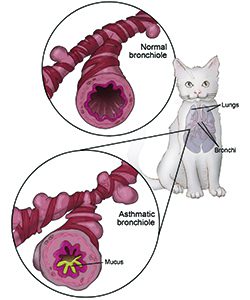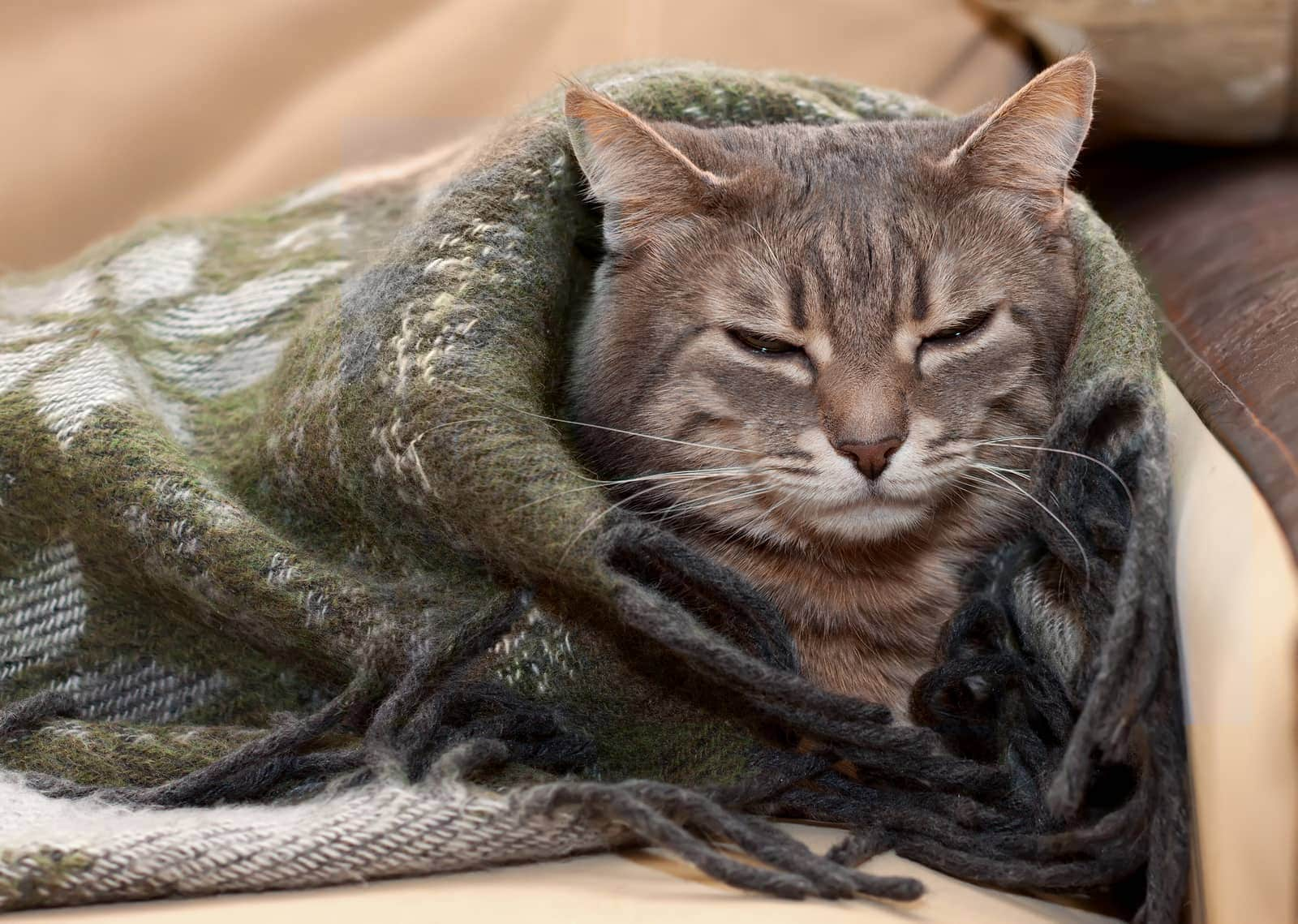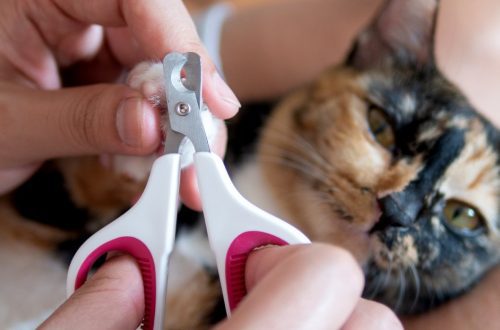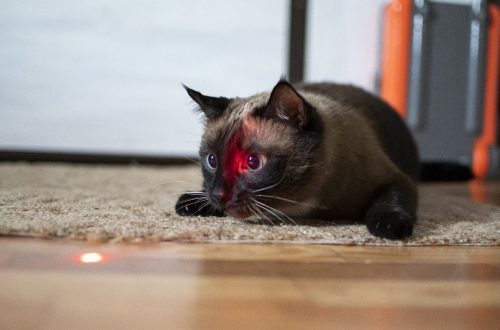
Do cats have asthma
Asthma attacks in cats can be the same as in humans. If the cat is wheezing, it may not just be a lump of fur stuck in the throat. According to the College of Veterinary Medicine at Cornell University, asthma can develop in 1-5% of all cats. Learn more about the signs of asthma in cats and how to help a wheezing pet in this article.
Contents
What is asthma in cats
Asthma in cats, like asthma in humans, is a respiratory disease that affects the lower airways and is thought to be caused by inhaling allergens and other irritants. These irritants trigger an immune response that causes individual bronchi, the tubes in the lungs, to constrict and the surrounding tissues to swell. This makes it difficult for the cat to breathe.

Sometimes asthma attacks in cats go away on their own, but some situations can be life-threatening. This is why a cat with an asthma attack should be seen by a veterinarian as soon as possible.
Causes of Asthma in Cats
Asthma can develop in a pet when the immune system produces antibodies that target a specific inhaled allergen, Cornell reports. When a cat inhales the same allergen again, these antibodies are rapidly activated, triggering a response in the lungs, resulting in swelling, irritation, and narrowing of the airways. As a result, thick mucus accumulates in the lungs, which further prevents the cat from breathing normally. Although both exercise and stress can trigger an asthma attack in a cat, Cornell’s list of the most likely causes of asthma includes the following irritants:
- Cigarette smoke.
- Smoke from the fireplace.
- Dust and pollen from plants.
- Mold and fungus.
- Household chemicals and cleaning products.
- Aerosols.
- Dust from cat litter boxes.
How to recognize asthma in a cat
A feline asthma attack can be difficult to recognize because its symptoms, especially in the early stages, can easily be mistaken for attempts to vomit a hairball. Resource The Spruce Pets writes that one way to determine the difference is to observe the posture of the cat. During an asthma attack, the cat will hunch lower than when coughing up a hairball, and its head and neck will be fully extended in an attempt to breathe in more air. Listen for wheezing, coughing, or sneezing.
Another complication is that attacks may occur infrequently, at least initially. Therefore, they are sometimes mistaken for symptoms of something less serious. Other signs of asthma to look out for include wheezing and difficulty breathing after exercise, and exercise intolerance. This means that the animal gets tired easily from vigorous activity. This sign alone is a good reason to have your cat checked by a veterinarian.
Asthma in cats: symptoms
Although there is no specific test to diagnose asthma in cats, a veterinarian will likely order a series of tests to rule out other causes, Cornell says. He will take your cat’s medical history and ask about observations you made at home.
To begin, the doctor will take blood and allergy tests, as well as a cytology smear, which is taken to check the mucus secreted from the cat’s respiratory tract. A specialist can perform x-rays and computed tomography to assess the condition of the lungs of the animal. If necessary, a bronchoscopy, an examination of the respiratory tract, which in cats is performed under general anesthesia, may be prescribed.
Asthma in cats: treatment
If a cat has persistent asthma, she will likely be given a stable course of hormones to reduce symptoms. A doctor may prescribe a bronchodilator, similar to an inhaler in humans, to be used as needed. These inhalers may come with a breathing nozzle specifically designed to help your cat breathe.
In addition to taking medication, it is important to do everything possible to remove allergens from the house. For the sake of the cat, it is better for smoking family members to go outside and wash their clothes with pet-safe detergents. The pet should be kept away from any wood-burning stoves or fireplaces. It is necessary to carry out a general cleaning in the house to remove mold, fungus and dust, as well as regularly carry out wet cleaning.
It’s best to use pet-safe cleaners based on ingredients such as plain vinegar and baking soda (unless you’re allergic to them). Do not burn candles and incense, use fragrances or air fresheners. Clay-based cat litter should preferably be replaced with a dust-free or other alternative litter using components such as pine pellets, recycled newspapers, or silicone crystals.
Unfortunately, feline asthma is incurable. However, it can be dealt with, and with proper care and diligence on the part of the owner, an asthmatic cat will be able to live a long and happy life.





